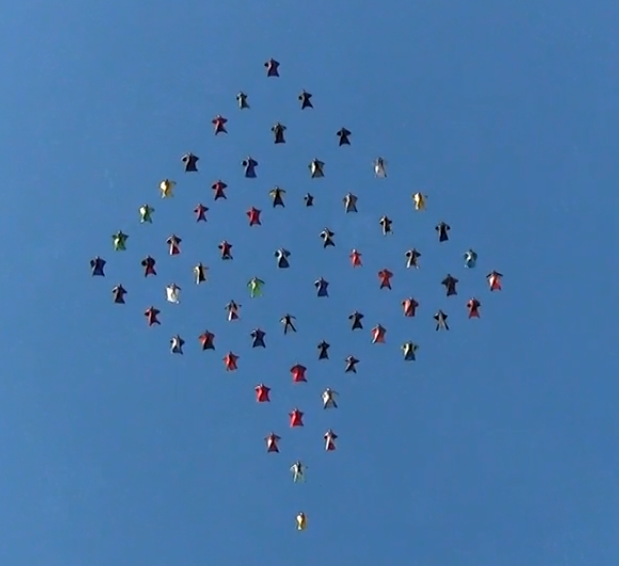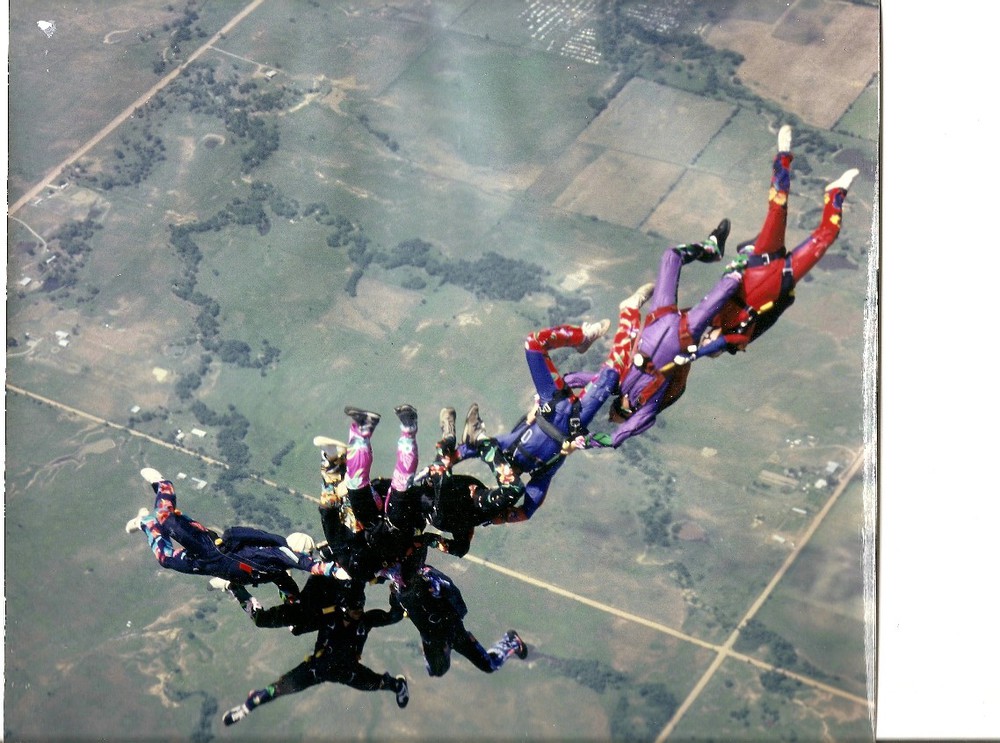smooth 0
Bill - thanks, I enjoyed your story. 
mccurley 1
I started in 73 and remember the good old days fondly. But without trying to express how much better things were back then or how people were different, or try to draw comperisons to toadys crop of jumpers, lets just remember what made the good olds, actually the good old days. It's the memories of the people you knew, and hopefully still know, that made them the "good olds" I think every one of every era in the sport will always look back on thier beginning days the same way no mater when they started.
Keep living in the present, treasure the past, and look forward to the future.
Keep living in the present, treasure the past, and look forward to the future.
Watch my video Fat Women
http://www.youtube.com/watch?v=eRWkEky8GoI
http://www.youtube.com/watch?v=eRWkEky8GoI
Well said......Pop D-47
QuoteWell said......Pop D-47
***
Ditto Pop!
And old DZO I worked for told me once...
If you think the times are changing,
it's because you're not keeping up with them!
Keep and open mind...THESE ARE the 'good old days!
~ If you choke a Smurf, what color does it turn? ~
kallend 2,027
QuoteQuoteLet's not forget that in the "good ole days" the fatality rate (fatalities per 1000 jumpers) was way higher than it is now, even with the low turn accidents considered.
Was it?? My understanding is that it's been pretty consistent over the years
See www.skydivenet.com/fatalities/fatalities_history.html
The bars are the fatality count, and the blue dots and line are the rate per 1000 skydivers. The actual fatality count stayed pretty constant, but the number of active skydivers increased by 3x over the last 20 years.
John
Thanks for charting the info that you compilied but your showing the chart to a bunch of old farts that were there, read the accident reports in parachutist and learned from these numbers.
IMO without a breakdown of the cause of the fatilities and the number of active jumpers there a lot left unexplained due to no fault of your own.
What caused the "significant reduction in fatalities" from 1981 to 1982? Thats a steep slope of a 60% reduction in fatalities.
The 300 % increase in the number of "active skydiver's" also needs to be defined.
Is a Tandem a active skydiver? Etc. IMO The problem with trying to collect data on the sport Fatalities and Active skydivers is your relying on a special interest group for the data.
Now that we have folks that can actually make a living skydiving & the teams some of them are cranking out 1000 jumps/year how is this reflected in the numbers on the chart?
2003 sounds like a outstanding year fatility wise but how many jumps were made in 2003 vs 2002. Was one yr safer than another or were there less jumps being made?
I'm not picking on you chart it was based on the information you were able to collect. USPA has the actual numbers, including definations. With out meaningfull data it's he said she said.
I'll stick with my good old boy average of 30 fatalities/yr over the last 30 yr's and leave it at that.
R.I.P.
Well, it's the best data we have and although it is not as complete as we'd like, it does show a very consistent trend. What with turbine DZs and all, I don't think anyone disputes that the total number of jumps made (even if tandems are excluded) is more than it was 30 years ago.
23 US fatalites in 2003, lowest number for many years.
...
The only sure way to survive a canopy collision is not to have one.
The only sure way to survive a canopy collision is not to have one.
jonstark 8
23 US fatalites in 2003, lowest number for many years.
-------------------------
You're right about it being a very good year. As a matter of fact I don't remember a better year statisticly since I started in 74. (My memory is good, just short, being a product of the seventies ya know.)
I'm sure I'd be able to find this info if I were more willing to dig or fully read here but what was the proportion of fatalities with fully functioning gear -vs- malfunctioning, no pull, entanglement, etc???
thx, jon
kallend 2,027
Quote23 US fatalites in 2003, lowest number for many years.
-------------------------
You're right about it being a very good year. As a matter of fact I don't remember a better year statisticly since I started in 74. (My memory is good, just short, being a product of the seventies ya know.)
I'm sure I'd be able to find this info if I were more willing to dig or fully read here but what was the proportion of fatalities with fully functioning gear -vs- malfunctioning, no pull, entanglement, etc???
thx, jon
Best I can do is graphed on my web site at
www.iit.edu/~kallend/skydive/ and scroll down until you get to the obvious link.
The historical data I have access to is not detailed enough to really answer your question. 2003's analysis should come out in the April issue of Parachutist.
...
The only sure way to survive a canopy collision is not to have one.
The only sure way to survive a canopy collision is not to have one.
oldfart 0
We left the plane at 4500 feet, and as I landed in an adjacent field to the main action area, I twisted my knee. I looked up, and witnessed about 20 young naked women running toward me. A scene like that simply takes your breath away.
If that had been the end of your story,I would've said that in reality,you went in and that was Heaven!
If that had been the end of your story,I would've said that in reality,you went in and that was Heaven!






I very much enjoyed your post. I remember in the early 80's when I started jump plane flying (C-182) the only altitude you'd get was 7,500, then a couple years later went to 8,500 and finally by 97' (end of my jump plane flying) the standard altitude was 10.5. FreeFly, what's that?.......all RW baby........
But there's a lot to be said for the major improvements in gear now, and better maintained jumpplanes (most DZ's).......Oh, I still drink, just have to go to bed earlier
Share this post
Link to post
Share on other sites